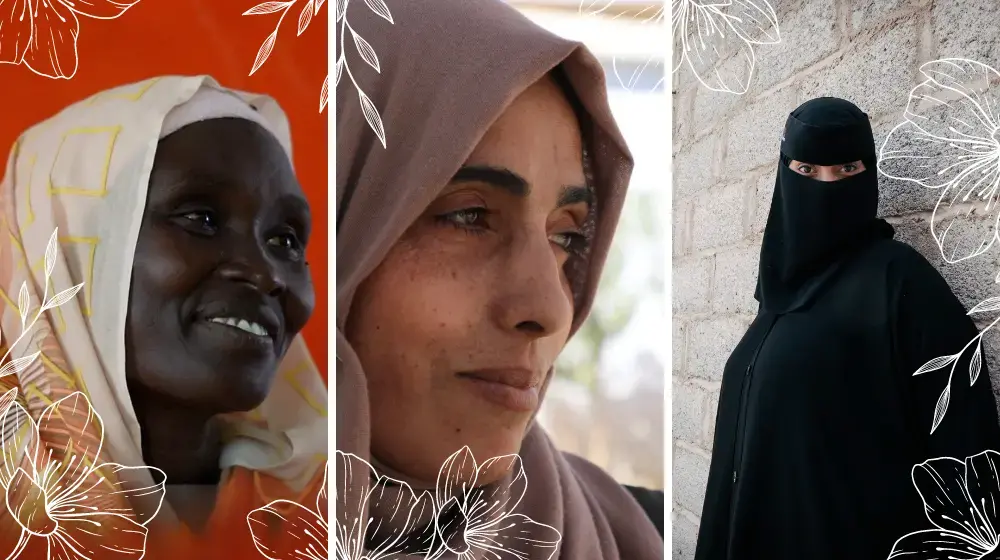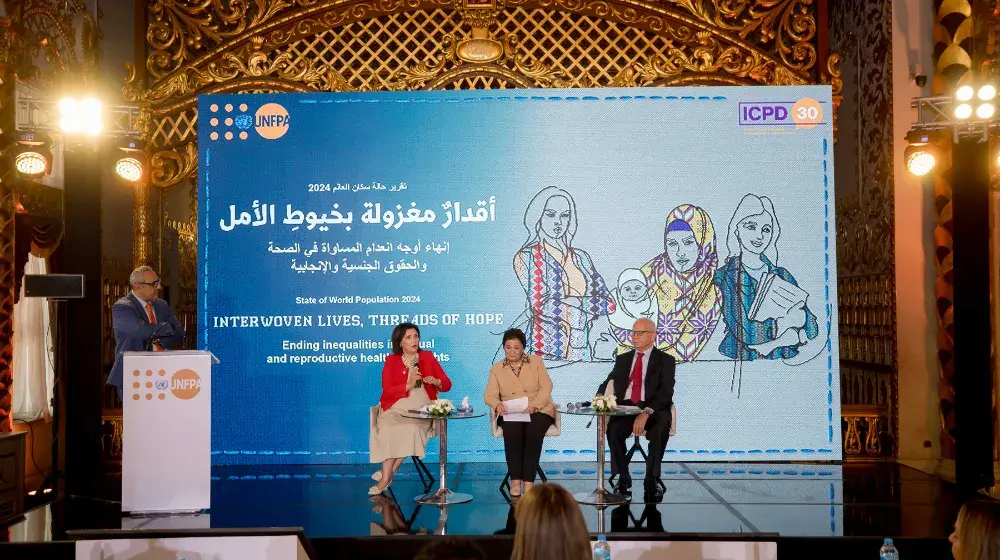Op ed by: Mohamed Abdel-Ahad - Published in The National, 7 July 2015
This year, the United Nations will mark World Population Day on Saturday amid growing concerns over the number and scope of humanitarian crises around the world. From armed conflicts in Syria and Yemen, to protracted crises in Somalia or Sudan, to natural disasters in Nepal, 2015 has not been gentle on the world population, particularly for vulnerable people whose susceptibility to harm increases during emergencies.
International aid efforts by both UN and non-UN aid organisations have continued unabated, despite their suffering from depleted funds, donor and media fatigue and a general sense of helplessness in the face of harrowing images of death and displacement. Competition for funds among aid agencies has pushed them to make choices in their fields, often at the expense of certain vulnerable groups, like woman or adolescent girls.
The images of women and young girls at the forefront of crises came rushing in when a representative of a generous government accosted me at an international donors conference and questioned the relevance of my work. “And why is reproductive and maternal health a priority when people have lost their homes and can find nothing to feed their children?’ he asked. “Do you think that those living in a tent really care about family planning?”
It took me a few seconds to realise that while the media and aid groups often refer to the plight of refugees and displaced populations during emergencies, they usually refer to food, water and shelter. Rarely do they refer to women who might die while giving birth or to women who suffer post-delivery complications or even to women who have unwanted pregnancies and may die due to their young age and lack of birth spacing. “For one, people in emergencies need food, water and shelter,” I told the government representative. “But much less visible are the needs that go unmet of pregnant women or women about to have babies.”
In crisis situations, access to basic and comprehensive emergency obstetric services and family planning decreases. Services to treat survivors of gender-based violence are scant or non-existent and care for and prevention of sexually transmitted infections is limited.
It is no coincidence that of the 10 countries with the highest maternal death rates in the world, eight are also affected by insecurity and conflict: these are countries where some donors unfortunately did not see the real importance of supporting maternal health. Where should a pregnant displaced woman go for medical help? How can she deliver her baby safely when all she has over her head is a flimsy tent? What are her chances of surviving post-delivery complications in the absence of a maternal health clinic with at least basic services? What would happen to her surviving children if she dies giving birth?
It is easy to ignore these questions when the onus is on feeding and sheltering people. In reality, these same people continue to have children even under tents, and their newborn’s health largely depends on the availability of medical care that will ensure women a safe and hygienic delivery.
Last December, one Syrian refugee lost her life soon after she gave birth to triplets in a tent in the Bekaa valley in Lebanon during the harshest snowstorm Lebanon had witnessed in years. Social media buzzed with photos of the three newborn boys, attracting an outcry about how it is still possible today for a young woman to die of post-delivery complications only because she could not access a maternity clinic.
This and other examples are a stark reminder that women and girls have specific needs that are often ignored in crises. For UNFPA, the United Nations Population Fund, planning emergency response includes making medical supplies and clean delivery kits available at various medical structures, making information on women’s health readily available and training health care workers on reproductive and maternal health care.
These interventions – along with supporting maternal health clinics in refugee camps and recruitment of midwives and obstetricians to perform normal deliveries – ensure timely referral of pregnant women to hospitals and help ensure safe deliveries while reducing maternal deaths even in dire circumstances.
Ad hoc delivery rooms may be set up in damaged buildings, mobile health clinics may be dispatched and midwives are sometimes provided with motorcycles. Women centres are established to provide women and girls with psycho-social counselling and support, and teach life skills to combat sexual and gender based violence. More comprehensive services are organised when the worst of the crisis has passed. Experience has shown that such endeavours have worked well in saving women’s and children’s lives: as of July 1, 2015, 3,771 babies have been born in clinics supported by UNFPA in Zaatari camp in Jordan with not a single maternal death.
Humanitarian crises magnify the needs of women and challenge the humanitarian community to cater to their specific needs. These needs include providing for their maternal health, ensuring they have access to at least basic antenatal, delivery and postnatal safe services even in the most difficult contexts.
In emergency situations, an estimated one in five women and adolescent girls are likely to be pregnant. Humanitarian assistance is about a package of essential services including feeding people and providing them with clean water and shelter. It is also about saving the lives of women and their newborns by ensuring that one basic aspect of life, delivering babies, is done in dignity and under humane circumstances. It is about the protection of women and girls from sexual and gender based violence and abuse.
Mohamed Abdel-Ahad, based in Cairo, is director of the United Nations Population Fund for the Arab region.




